I Stood Up to Apple and Fixed My Own Mac
Credit to Author: Erik Galli| Date: Mon, 04 Mar 2019 17:14:51 +0000
This article originally appeared on VICE Sweden
My computer – a MacBook Pro Retina from late-2012 – still works remarkably well. The only problem: the battery is shot. I’ve spent roughly 80 percent of the past year trying to find a plug socket because my laptop is useless without power, which kind of defeats the point of owning a laptop.
I’m over carrying an extension cable around in my bag. I need a working, wire-free computer.

Besides the whole power issue, the laptop runs fine, so instead of shelling out on a new one I’ve decided to change the battery.
The problem: Apple offers very little customer support – phone or in-store – for potential hardware issues, unless you’re within your warranty (which I’m definitely not) or want to pay them a ton to do the whole job for you (I got a quote for around €300, just to change the battery). They make their products almost impossible to open, welding different components to each other, and have been known to go after independent repair shops, such as the time they tried and failed to sue the owner of a small business in Norway for performing unauthorised iPhone repairs. Last month, CEO Tim Cook blamed the company’s poor revenue on more people choosing to change their battery instead of buying a new phone.
For all the incredibly obvious reasons, this bugs me.
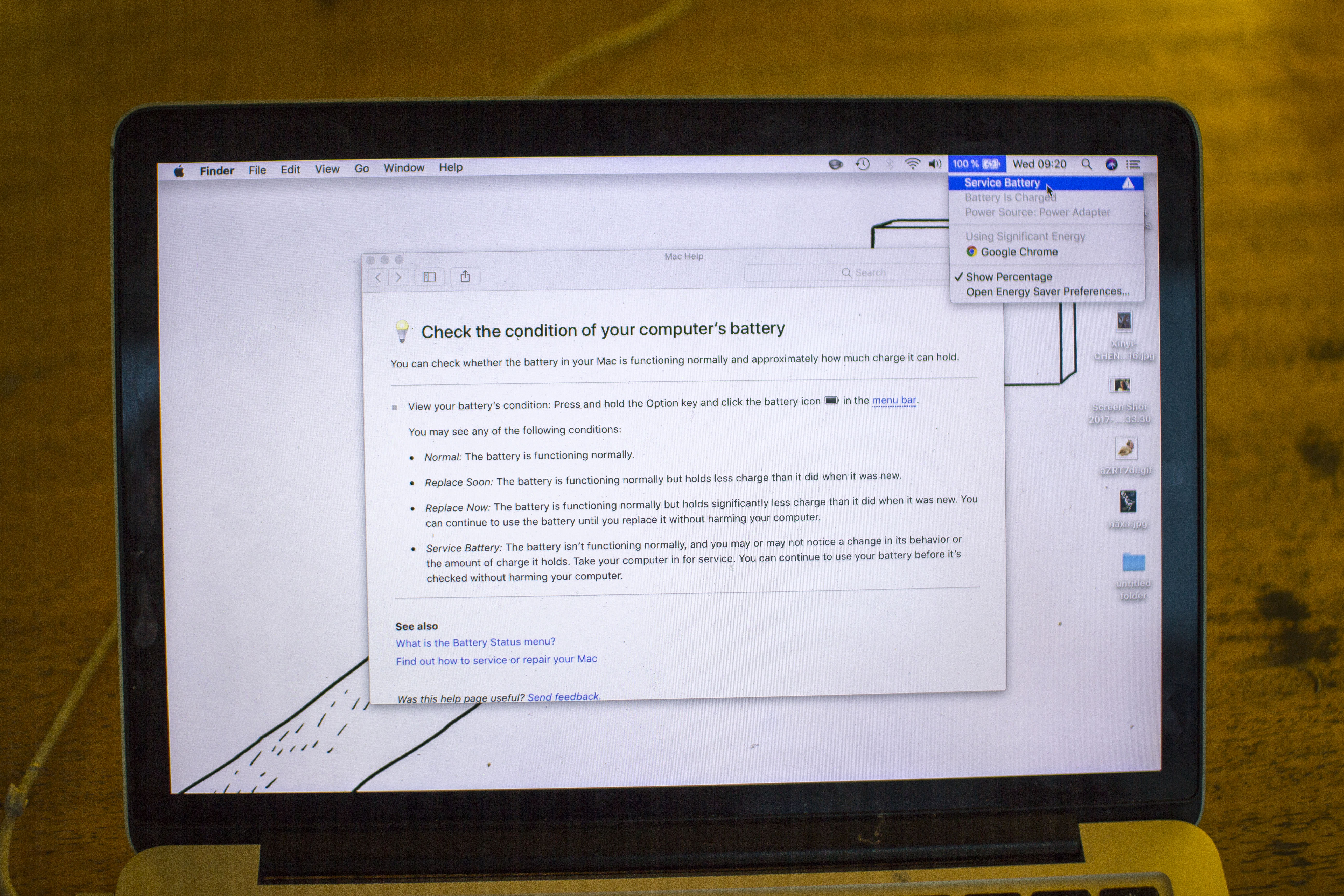
Worse still, this intentionally-unhelpful policy is as detrimental to the planet as it is to me and my free time.
According to Apple themselves, my MacBook has generated around 540 kilograms of greenhouse gases, most of which were emitted during production. The average Brit currently contributes around 6.2 tons of CO2 a year; Americans manage 16.22. If we want to stop global temperatures from rising a further 2 degrees (and even if we manage that, things don’t look particularly good), we need to reduce annual emissions to less than 2 tons per person. Buying a new laptop would amount to a quarter of my annual allowance, i.e. not good. Yet Apple actively lobbies against US efforts to force companies to give consumers more information about repairing their products.
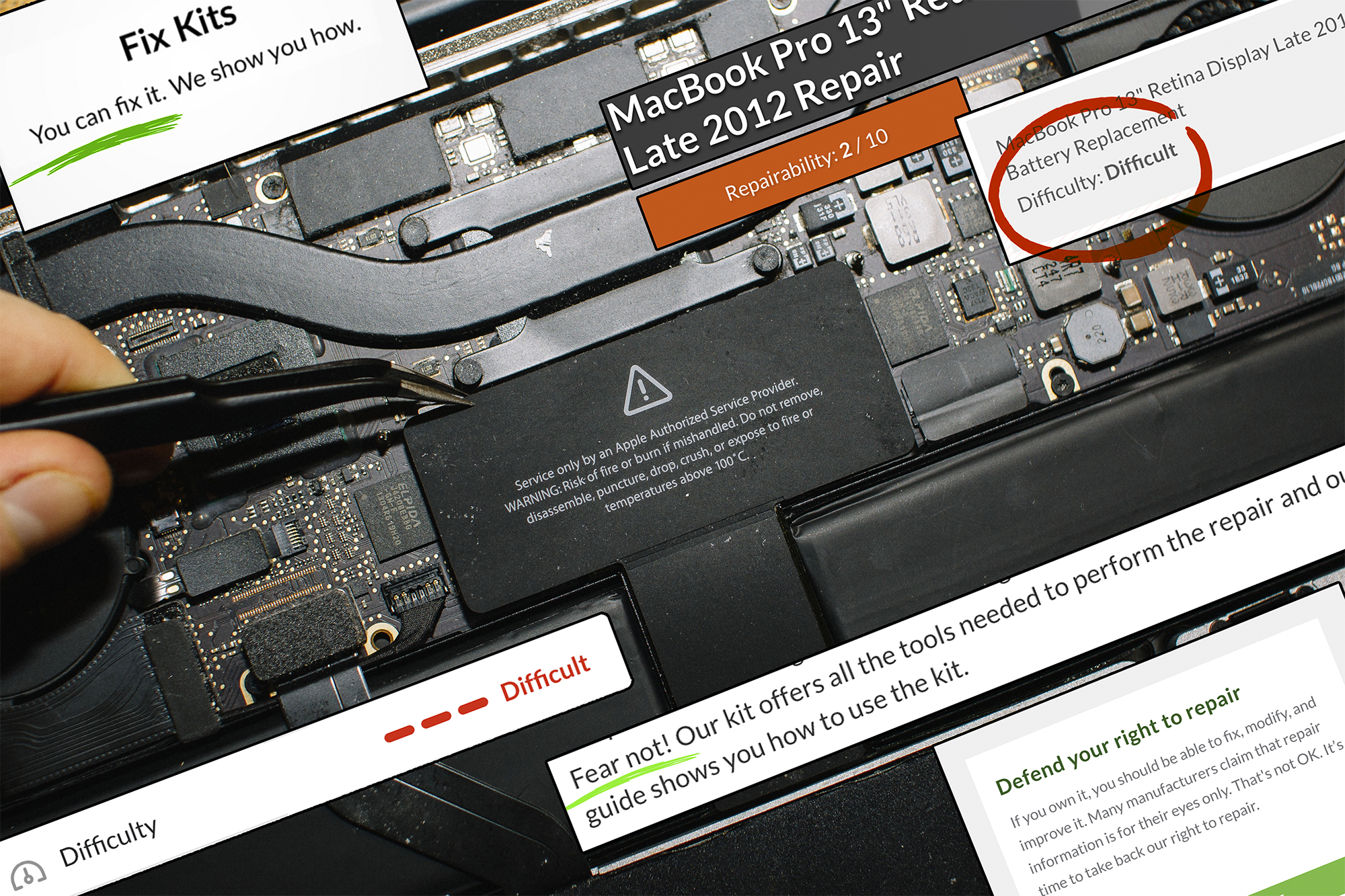
Thankfully, there are plenty of companies online happy to help, selling kits with a new battery and all the tools you need to stick it in your Mac. However, it’s not fully clear how hard the process is. The specs “Fear not! Our kit offers all the tools needed” and “Difficulty: Difficult” give off mixed messages, but it has to be worth it for the money I’m saving.

Once I have the kit in hand, I don the supplied protective glasses, put on the latex gloves, and get to work disassembling my laptop. The instructions make it clear that Apple have placed the battery as far into the computer as possible. I need to pull out the speakers, hard drive and numerous other unknown components before I get to it, then put absolutely everything back in the right spot.
To do this, I have an array of screwdrivers, tweezers and tools I have never seen before. Once I get inside my laptop, I see it’s full of dust and sand. Things are looking good.
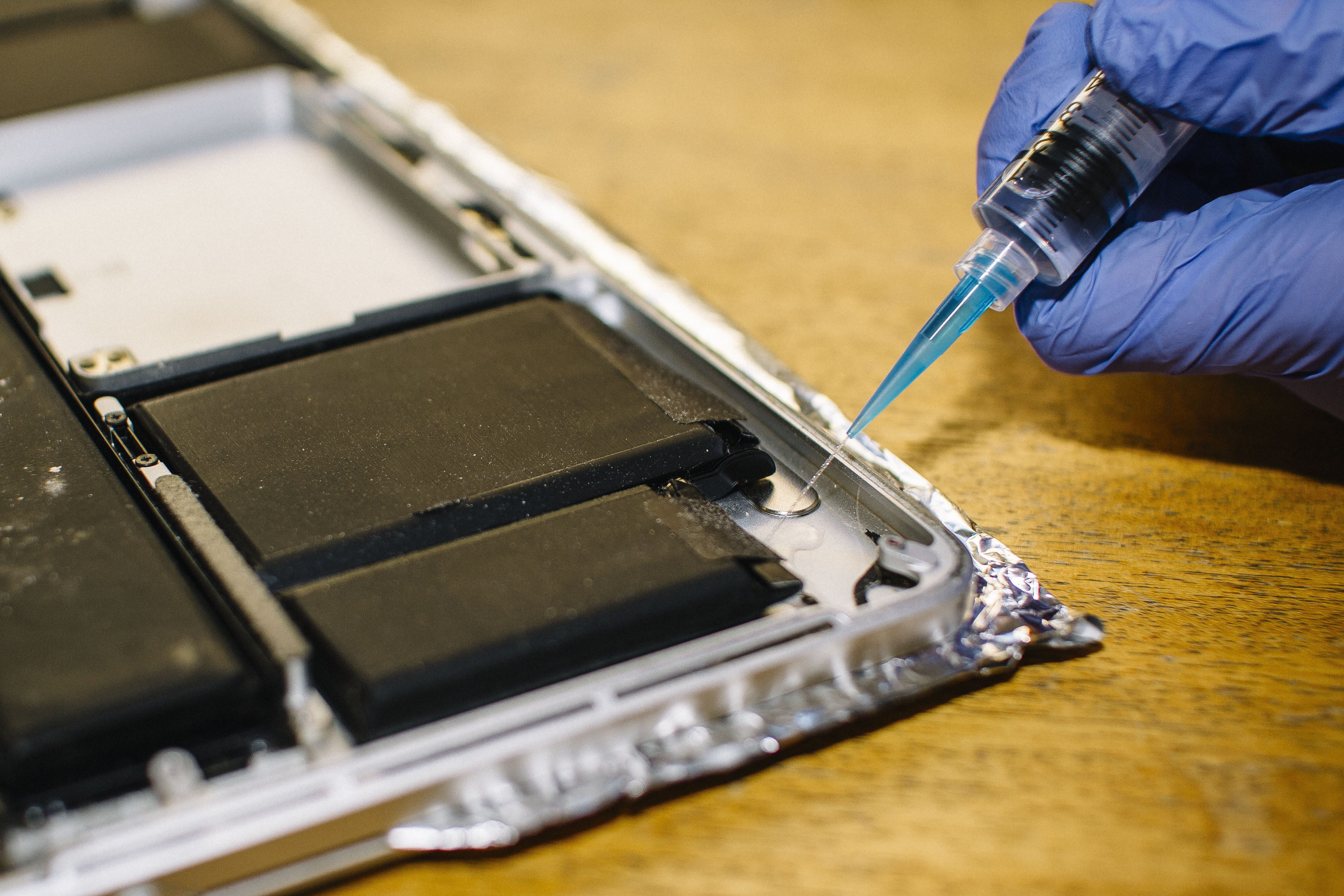
Various minuscule screws must be marked and sorted so I can put my laptop back together again when I’m done. This is fiddly, but doable. I start to get worried when I pick up some acetone-like liquid I’m supposed to squirt into the computer to dissolve a glue holding parts of the battery in place.
For every part I remove and microscopic cable I pull, the more I feel like I’m very badly fucking everything up. Equally, the further I go, the less point there is in turning back.
And then what I’ve been fearing most happens: a screw securing the battery itself refuses to give. As I keep trying, I see, horrified, that the screwdriver’s starting to wear down the screw head. I realise I never did a backup on my computer, and feel the colour drain from my face and sweat pool in the small of my back. If I keep trying to get the screw loose, I run the risk of ruining it forever. But I’ve come so far at this point that I really only have one place to go: onwards, blindly.
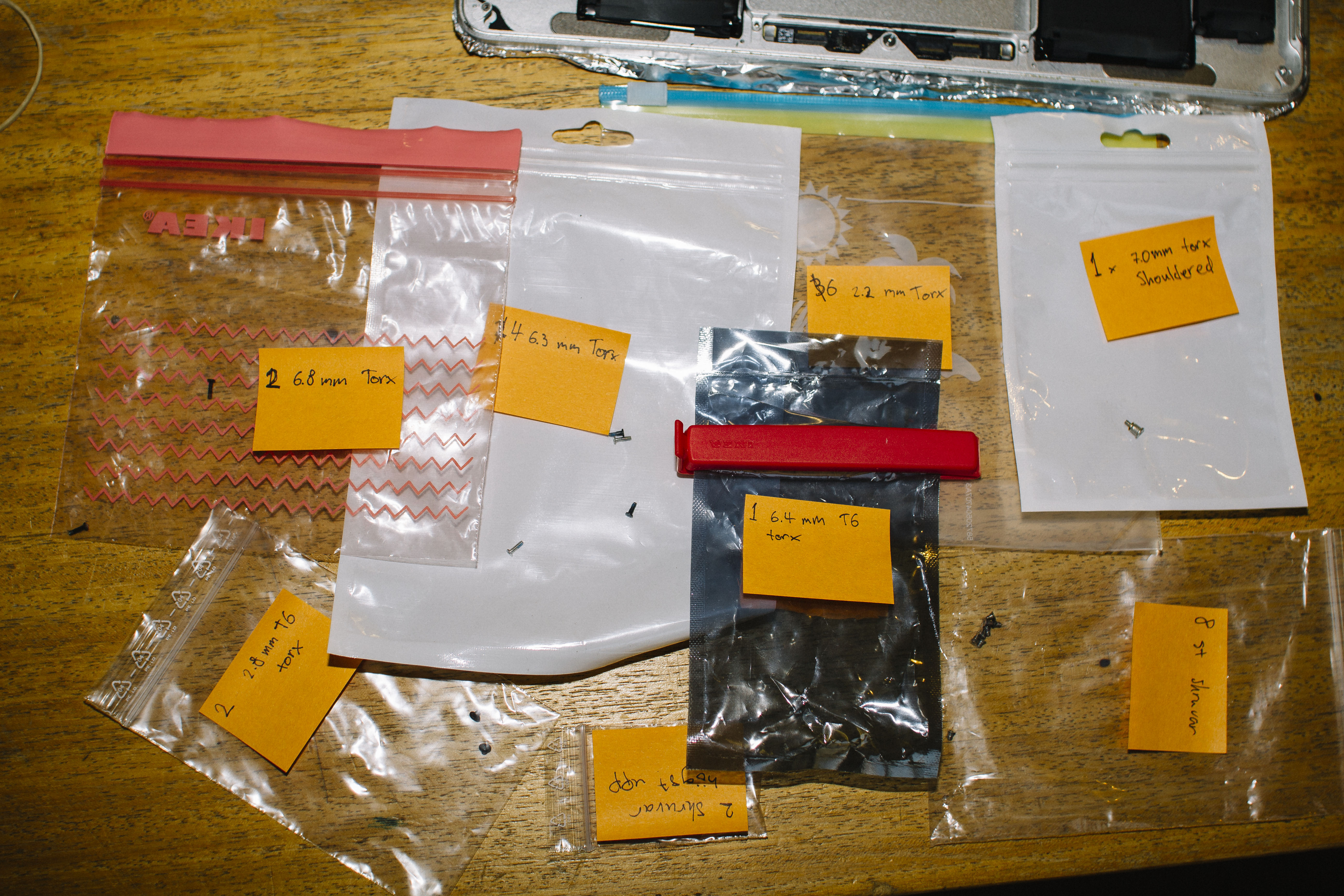
Before long, I decide to call Apple’s customer service and come clean: I’m in the middle of changing my battery and I need help. The lady on the phone hesitates. She explains that since my computer is so old, I no longer get phone support. The conversation goes:
“This isn’t something we recommend that you do. I’m not sure who sold you this kit, if it’s Apple or…”
“No, it’s a different company. You can’t actually buy these through Apple, right?”
“No, exactly. If you go to an authorised reseller or service shop they can help you with the whole process.”
“Yeah, that’s kind of what I’m trying to avoid.”
“Yes.”
A pause.
“I can imagine there must be a lot of screws on the way to the battery.”
“Yeah, like at least 20.”
Another pause. I’m fairly certain I’m about to be turned down. But to my surprise she continues in a friendly tone:
“If I were you, I’d either turn to a techie friend, a tech store or maybe a third party repair shop.”
“So, as an Apple customer, I can’t get technical support for Apple products?”
“No. Or, yes: you can get technical support, but not for performing repairs yourself that really should be done by a professional. Your MacBook Pro in particular has a built-in battery that you need to be really careful with, as it will affect your warranty. But if the computer is this old… I’d probably do the same thing myself. Why not? The best thing that could happen is that you give new life to an old computer.”
“Yeah, exactly.”
“Maybe you can find some help on online forums? You usually find the best help those kind of circles.”
The Apple lady wishes me luck and offers to email me a couple of articles that might help. Inspired by her unexpected blessing, I follow her advice and visit the forums on the website I bought the battery from. One post recommends using a rubber band between the screw and screwdriver for a better grip. It works.
Finally I stand, triumphantly, eye to eye with the old battery.
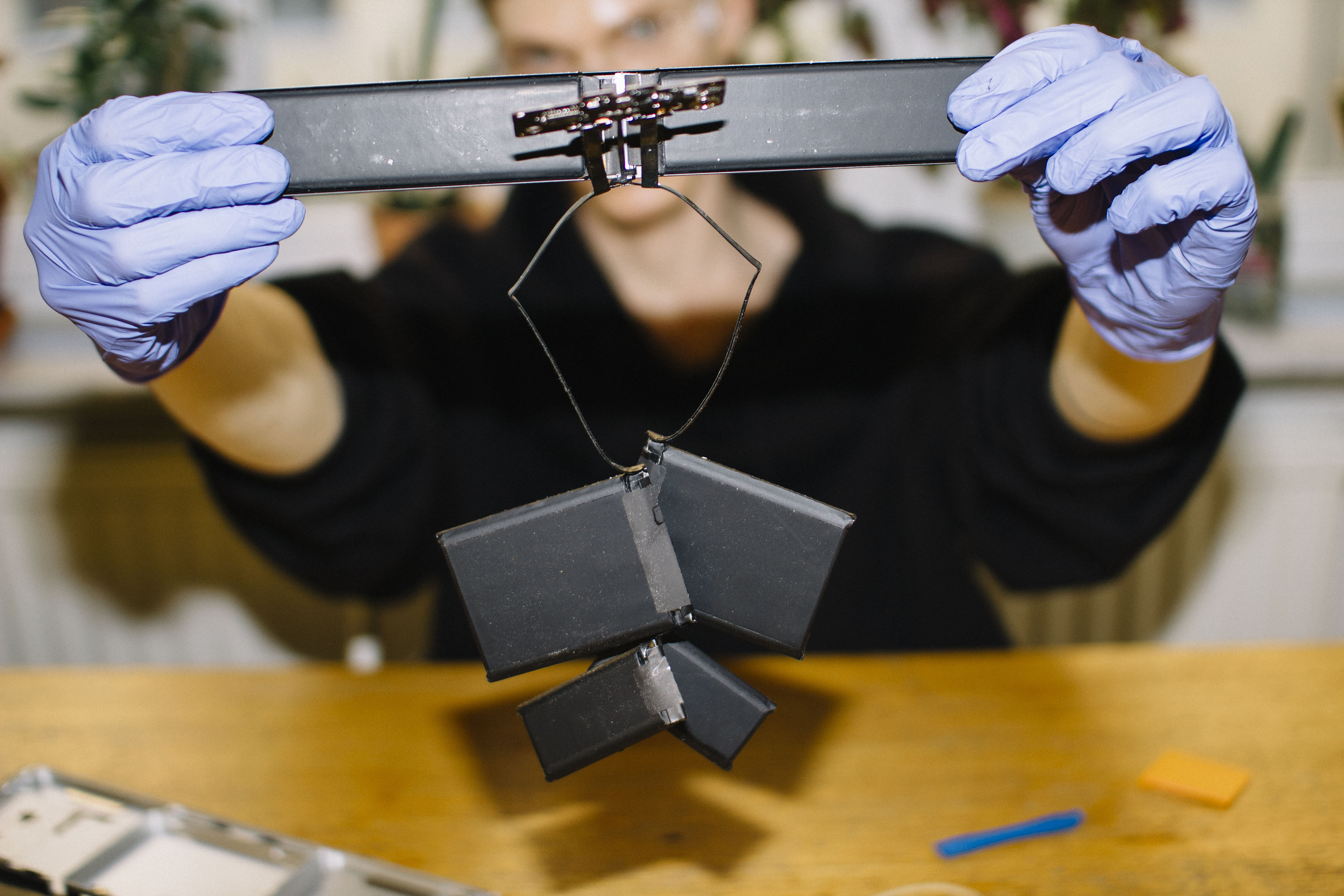
With renewed confidence, I reassemble my Mac. By the time I’m finished, night has fallen – the whole process has taken around eight hours. I can feel my heart beating as I hit the power button.
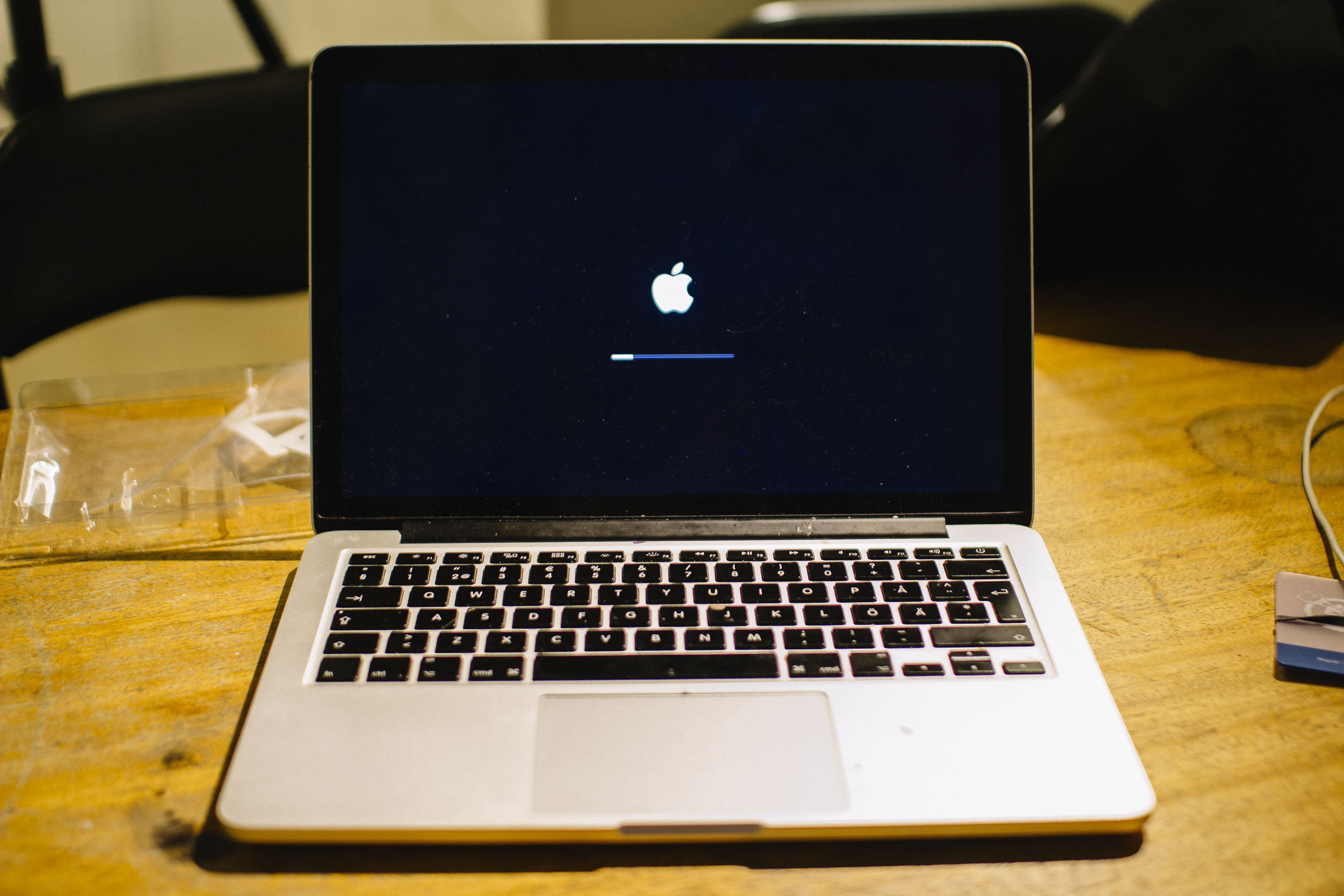
Never have I been so happy to see an Apple logo. My laptop’s working without an external power source. I am free from the extension cord, with a battery as good as brand new.
So: should you fix your Apple computer yourself? If your warranty’s still valid, absolutely not. If not: maybe. At times, it’s insanely fiddly, and it demands performing every step with meticulous care. But I wouldn’t say it’s hard, exactly. All you do is follow instructions. I don’t know if I was lucky to get through the process without damaging my computer, or if you actually need to be unlucky to break something. What I do know is that I spent at least a full work day doing it.
A couple of days after replacing the battery, I notice something unsettling: the glue that was supposed to hold the new battery in place doesn’t seem to be holding. Shaking the computer, I can hear a rattle and feel something moving inside. I call the company. They promise to send me some new adhesive. A loose battery shouldn’t be dangerous, they say, but to be safe I’d better redo the whole process and make sure the battery’s properly stuck this time. In their dreams
This article originally appeared on VICE SE.